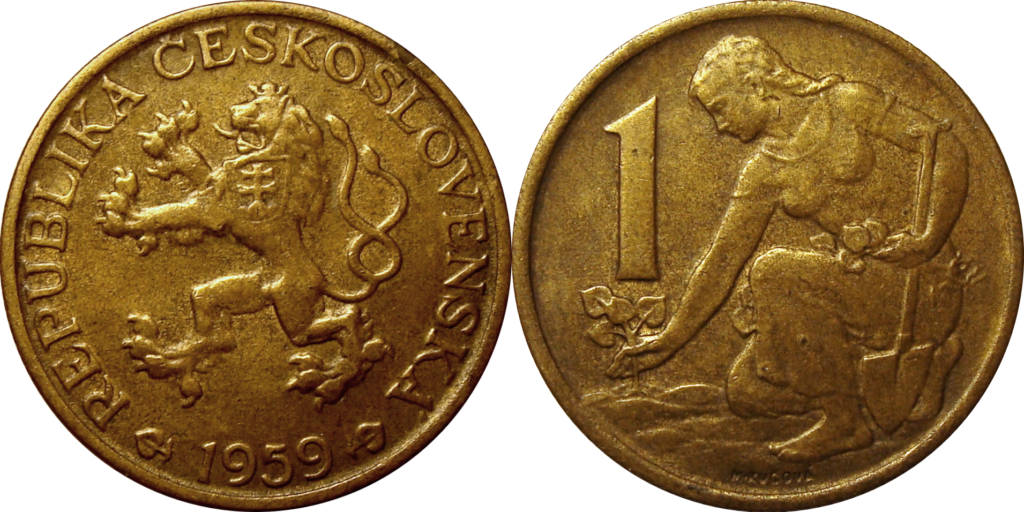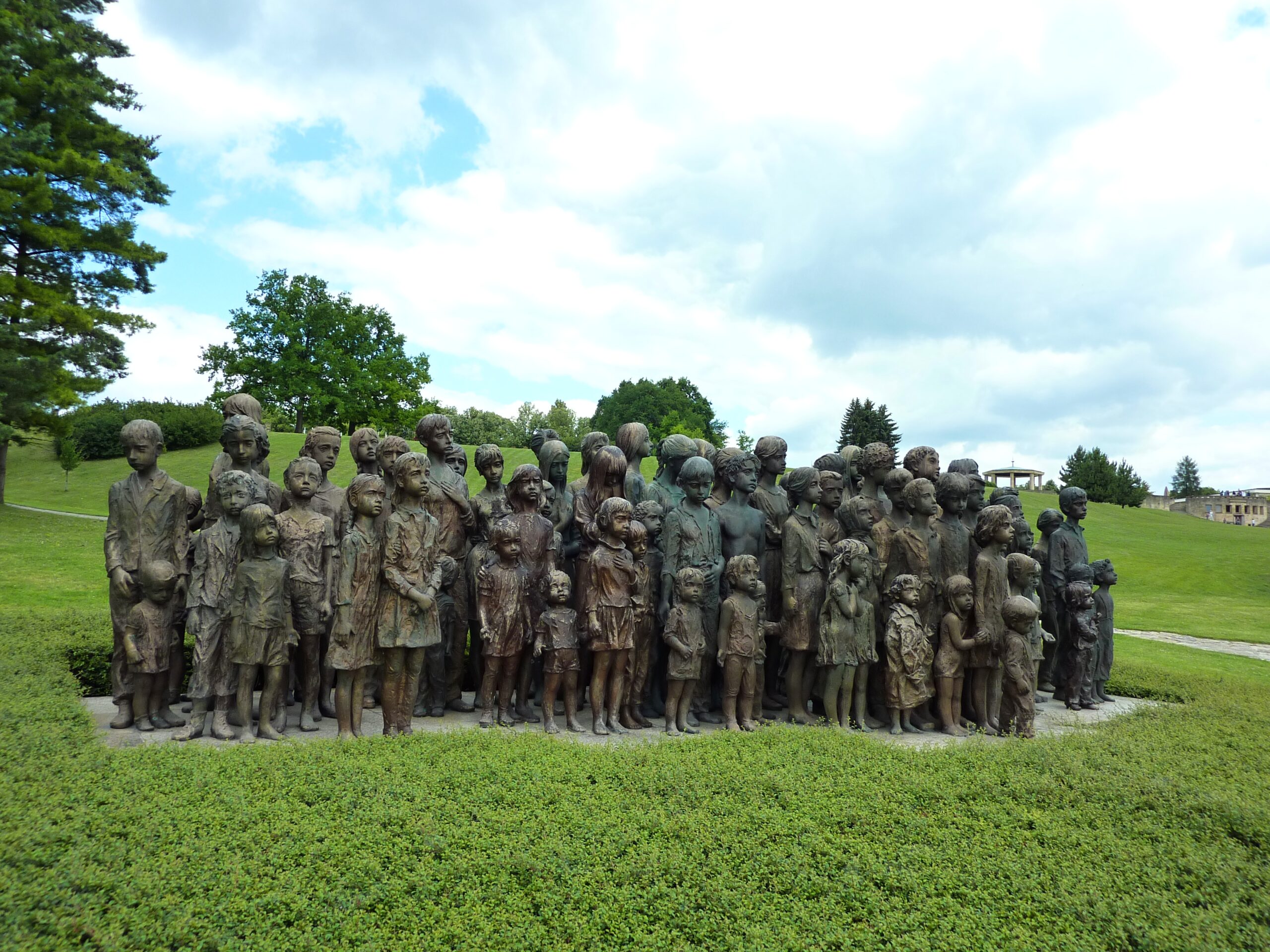Exceptionally talented artist, academic sculptor Marie Uchytilová, who turned 100 this year, was born on 17 January 1924 in Kralovice in the Pilsen region and died on 16 November 1989 in Prague. She is the author of many busts, sculptures and statues of important figures of Czech culture, portraits and medals for various anniversaries, her one-crown coin with a girl planting a lime branch was in the wallet of every Czechoslovakian 30 years ago, but above all she is the author of one of the most impressive sculptures in the world - the Monument to the Children's Victims of the War in Lidice.
"Stand up people and hear the message of the children murdered by war. And hurry to tell others that peace hangs by a spider's thread!"
"All the tongues of the world are silent with my statues that I make for your children..."
(Z Poems about Lidice Marie Uchytilova)
Marie came from a cultured and educated family of tax official Václav Uchytil and his wife Anna Seidler-Uchytil. Her father was a long-time chairman of the Pilsen Numismatic Society and an excellent storyteller and expert on old Pilsen, about which he lectured on the Pilsen radio. He told his daughter about his experiences from the First World War, and she created a sculpture called Wardepicting a resting woman on the run with three sleeping children.
Of all the artistic disciplines, she chose sculpture because, as she said, sculpture speaks all the languages of the world and even the blind can touch the sculptures. She started studying with the Pilsen sculptor Otakar Walter, but the war came and she was totally deployed in Svitavy for forced labour.
When the war was over, she met a classmate who had just returned from a concentration camp with severely compromised health, and she told her about the horrors she had experienced and what had happened to the children of Lidice. Maria was deeply affected and decided even then that she would remind the whole world of the suffering of the children. She would build a monument to those who were forgotten, the child victims of the war. A cry of conscience for humanity. She had no idea she was sacrificing twenty years to it. And that she wouldn't live to see her work installed.
"I wish that one day, as in Shakespeare's Romeo and Juliet, a house would 'make peace with the house' over the grave of these children...", She said.
In 1945-1950 she graduated from the Academy of Fine Arts in Prague under the guidance of Professor Otakar Španiel and after graduation she joined the Vocational Art School on Hollar Square in Prague where she taught for eighteen years.
Her colleague was the mother of Bedřiška Synková, who at the age of 19 found herself in prison for events she organized as the leader of a then-banned Boy Scout troop. Marie entered a competition to design a new one-crown coin and, according to the photograph, depicted Bedřiška planting a lime branch. Although her design did not win, the then Minister of Finance liked it so much that he pushed for the mintage. This crown then became the longest used currency in the history of our coinage, it was in circulation for more than 35 years, until the collapse of Czechoslovakia.

During her studies in Prague, Marie met her future husband František Kuča, who was also studying foreign languages and shorthand in Prague. They married in 1947 and two years later their daughter Sylvia was born. In 1962 they parted amicably. Marie met her second husband, five years younger, Jiří Václav Hampl, a Czech landscape painter and medallist.
In 1969 she won the first prize in the competition for the monument Barunka - Božena Němcová 17 years old for Česká Skalice and ended her teaching activity. She wanted to dedicate herself only to the memorial of children's victims of the war. The impulse was the Souls Day: "The lights are on everywhere, but not on the nameless graves of murdered children," She said. Eventually, she thought of making statues of all 82 Lidice children who were murdered by the Nazis, and it would be a monument dedicated symbolically to all the children who died during the war in various countries around the world, between ten and twelve million of them.
She devoted the rest of her life to the memorial to the children's victims of the war, the first of its kind in the world, which is now an inseparable part of the memorial area in Lidice.
To work on the sculpture, she and her husband bought a plot of land adjacent to their house in Prague-Hodkovičky, where they built a large studio for 82 larger-than-life sculptures.
Although the task she took on was almost impossible for one person to accomplish, she managed to complete it in two decades filled with daily work. No rest, no time off. With each sculpture she completed, she experienced its fate and its terrifying death again and again. In doing so, she kept in touch with the Lidice women who visited her studio, and although she had photographs of the children, she made their faces anonymous, keeping only their proportions and gender.
"I started working very hard and tirelessly, and I haven't stopped working for a single day since," she later recalled. She spent up to eighteen hours a day in the studio. With the help of her husband, she created the work without any financial support.
In March 1989 she finished the work in plaster. She had the first three sculptures cast in bronze with her own savings and her parents' money, because it was a private initiative, no one commissioned the work, and some of her colleagues said it was crazy. That's all she could manage. On the eve of the Velvet Revolution, she died unexpectedly of a heart attack, exhausted not only from twenty years of daily work on the sculptures, but above all from the constant arguing and fighting over the existence of the monument.

Thanks to the efforts of her husband and daughter Sylvia, and with the help of financial donations from all over the country and the world, from Denmark, Japan, Germany and England, the project was completed, i.e. the money was raised to cast the statues in bronze, assemble the sculpture and place it on the plain of Lidice exactly as the author wished. In 1994, the most generous contribution from the Danish Albertslund, the twin town of Říčany near Prague, paid for a third of the large sculpture.
The first thirty sculptures were installed in Lidice in 1995, the last seven were unveiled on 10 June 2000, thirty years after the work began and eleven years after the death of the artist. The sculptures are oriented in such a way that the children look towards the graves of their fathers, grandfathers and friends.
Jiří Hartl later recalled that Germany had expressed interest in the sculpture as early as 1988 and the Japanese wanted to buy it and install it in Hiroshima, but they refused. It was Maria's dream, and dreams don't sell. A year after its completion, the monument was sold together with Maria's daughter for a symbolic one crown to Lidice and Hampl donated the plaster model of the sculpture of Lidice children to the Museum and Gallery of Northern Pilsen.
On 28th October 2013, Marie Uchytilova's daughter Sylvia received the Medal of Merit 1st Class in memoriam for her mother at Prague Castle. It was awarded to her by then President Miloš Zeman, who after visiting Lidice said that it was "the most beautiful and at the same time the saddest monument he has ever known in his life".
Gnews.cz - Jana Černá
PHOTO - wikipedia, facebook



